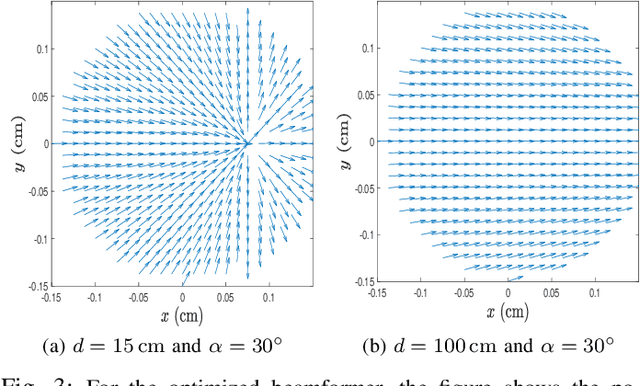Near-field focusing using phased arrays with dynamic polarization control
Paper and Code
May 20, 2022



Phased arrays in near-field communication allow the transmitter to focus wireless signals in a small region around the receiver. Proper focusing is achieved by carefully tuning the phase shifts and the polarization of the signals transmitted from the phased array. In this paper, we study the impact of polarization on near-field focusing and investigate the use of dynamic polarization control (DPC) phased arrays in this context. Our studies indicate that the optimal polarization configuration for near-field focusing varies spatially across the antenna array. Such a spatial variation motivates the need for DPC phased arrays which allow independent polarization control across different antennas. We show using simulations that DPC phased arrays in the near-field achieve a higher received signal-to-noise ratio than conventional switched- or dual-polarization phased arrays.
 Add to Chrome
Add to Chrome Add to Firefox
Add to Firefox Add to Edge
Add to Edge